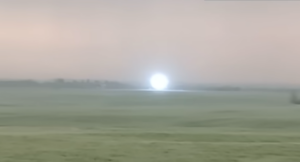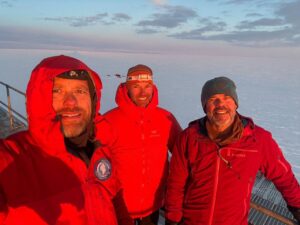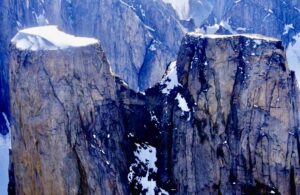Long before Borge Ousland and Mike Horn, Knud Rasmussen was the undisputed king of the long-haul arctic expedition. This year marks the centennial of his greatest achievement, the Fifth Thule expedition.
Rasmussen seemed destined for arctic travel. Born in 1879, his father was Danish, his mother part-Inuit. He was raised in Greenland and taught Kalaallisut, the local Eskimo–Aleut language, as his primary tongue. These early years exposed him to Inuit culture, traditional hunting methods, and a host of polar survival skills.
Then at 12, he was sent to school in Denmark. He completed his education and briefly attempted a career as an actor. But it was not to be, and he soon turned his attention back to his childhood home, Greenland.
First expeditions
His first true expedition, the 1902 Danish Literary Expedition, examined Inuit folklore in Greenland’s northern reaches. He published The People of the Polar North on his return. The expedition, and subsequent publication, laid out a framework for the next 20 years of his life. Rasmussen devoted himself to scientific and anthropological expeditions in the Arctic.

Rasmussen, left, and his friend and colleague, the author Peter Freuchen.
In 1910, Rasmussen and friend Peter Freuchen set up a trading post in Northwest Greenland. This remote outpost was designed to fill a need. A succession of arctic expeditions led by Robert Peary had irreversibly changed Inuit life in the region. Between 1886 and 1909, Peary flooded the region with guns, cloth, and technology from Europe and America. When he claimed to reach the North Pole in 1909, the expeditions stopped abruptly, and so too did the supplies upon which locals had come to rely.
The Thule trading post fulfilled a local need while also serving as a base of operations for Rasmussen’s increasingly ambitious expeditions.
“Give me winter, give me dogs,” he once said. “You can keep the rest.”
Dogsledding from Greenland to Siberia
For his Fifth Thule expedition, Rasmussen set a prodigious goal. He would attempt to traverse the Northwest Passage, traveling across the Canadian Arctic as far as Siberia. Along the way he would move from one Inuit community to another, listening, learning, and documenting the Inuit way of life.
In 1921, Rasmussen set off with four Danes and six Greenlandic Inuit. They made a base camp on “Danish Island” near present-day Naujaat, formerly known as Repulse Bay. From here, they split up to explore and map the surrounding area. It was not until two years later, in 1923, that Rasmussen set out on his epic journey west.
Together with two Inuit, Qaavigarsuaq and Arnarulunnguaq, Rasmussen headed across the top of North America by dogsled. Unlike other explorers of the period, he chose to travel comparatively light, hunting for food and procuring supplies from local people as he progressed.
During those years, Rasmussen came across other white people only occasionally. He described with wonder the hospitality on a ship in the Northwest Passage:
“Ten minutes later I was on board, with my teeth deep in an orange. A little later, I sat staring with wide eyes at a real cup of actual steaming coffee. There were such things as Bread, and Cheese, and Butter, on the table…And having got used to the wonder of all this after a while, it seemed quite natural to be sitting on a box containing 5,000 cartridges of the precise caliber we had been using; I listened calmly, as in a dream, to the promise of unlimited ammunition…”
Great skills with dogs
Fellow explorer Therkel Mathiassen described Rasmussen’s technique as “the same as that of the best of all Eskimo sledge travelers, the Polar Eskimos”. He raved about Rasmussen’s management of dog teams.
“Rasmussen had a marvelously keen eye for the ability, faults, and needs of each one of his dogs,” said Mathiassen. “When his finest deed, the Fifth Thule Expedition, was accomplished and he stood on the east coast of Siberia looking back. [he said] ‘I am overwhelmed by a warm feeling of gratitude to all our patient and uncomplaining dogs.’”

Rasmussen and one of his dogsleds. Photo: Visit Denmark
Rasmussen, Qaavigarsuaq, and Arnarulunnguaq covered more than 30,000km of inhospitable terrain, much of it unmapped. This longest-ever sled journey took more than three years. Along the way, they encountered many Inuit communities and amassed a collection of more than “20,000 specimens, of which 15,000 are ethnographical and archaeological.”
A collector of stories and myths
Though these specimens ended up in Danish museums, his work documenting cultures still relatively unchanged by the wider world, was invaluable. Twenty-seven reports were published on the Fifth Thule expedition between 1927 and 1952, as well as Rasmussen’s popular book, Across Arctic America. These publications detailed the beliefs, myths, legends, and folklore of the groups he met.
Because he spoke Inuktitut, Rasmussen could collect information that other ethnographers could not. Some fascinating samples:
- The Barren Ground Inuit told him: “It is our belief that the trees in a forest are living beings, only that they cannot speak; and for that reason, we are reluctant to spend the night among them. And those who have at some time, say that at night, one can hear a whispering and groaning among the trees, in a language beyond our understanding.”
- Since “the soul of the caribou detests everything pertaining to the creatures of the sea,” in caribou hunting, all implements associated with hunting at sea must be left behind. Likewise, footwear used to hunt caribou must be left behind when hunting seal.
- He also shrewdly analyzed why the interior Inuit around the Kazan River had such problems with starvation, despite living around so many caribou. But they lacked the tough sealskin boots of their coastal cousins and couldn’t get around in summer as well without wearing through their much flimsier caribou skin footwear.
Rasmussen avoided the pitfalls of many a European explorer. He did not presume to know all the answers. Rather, he approached the Inuit as equals, eager to learn all he could of their cultural heritage and history. One hundred years later, his fifth expedition remains an iconic moment in polar exploration.

Rasmussen in 1924, on the left (with Inuit friends Mrs. Arnalulunguak and Mr. Meetek). Photo: National Photo Company Collection






